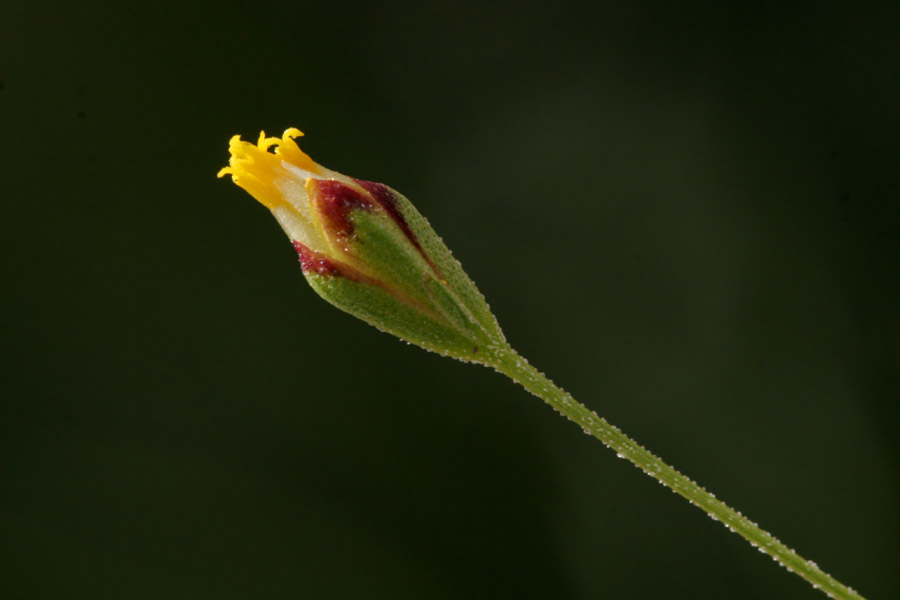
|
Family: Asteraceae |
Annuals, 5-50+ cm. Stems erect, simple or branched (usually distally). Leaves mostly cauline; mostly opposite (distal sometimes alternate); petiolate or sessile; blades linear to filiform or 1-2-pinnately lobed (lobes 3-7+, linear to filiform), ultimate margins entire, faces sparsely hairy (hairs bulbous, conic, or fusiform, 0.1-0.3 mm), glabrescent, usually gland-dotted. Heads radiate or discoid, usually in loose, corymbiform to paniculiform arrays. Involucres obconic-obpyramidal to ± turbinate or hemispheric, 3-6 mm diam. (subtended by 0-3 bractlets). Phyllaries persistent, 4-6+ in 1-2 series (spreading or reflexed in fruit, distinct, obovate to oblanceolate, subequal, thin-herbaceous to membranous, margins membranous, often purplish or yellowish). Receptacles convex, pitted, epaleate. Ray florets 0 or 1-2, pistillate, fertile; corollas yellow or white. Disc florets 2-8(-30+), bisexual, fertile; corollas yellow to yellowish, sometimes red-tipped (± stipitate-glandular), tubes shorter than or about equaling campanulate to funnelform throats, lobes 5, deltate. Cypselae narrowly obpyramidal, 4-angled, finely nerved, ± hirsutulous to villous (at least at bases and/or on angles); pappi persistent, of 8+ spatulate to lanceolate (basally and/or medially thickened, distally and/or laterally scarious) scales (all, some, none, or the alternate ones ± aristate). x = 11. According to B. G. Baldwin et al. (2002), among others, Schkuhria is closely related to Achyropappus Kunth and to Bahia.
|
This project was made possible in part by the Institute of Museum and Library Services [MG-70-19-0057-19].
Powered by Symbiota



